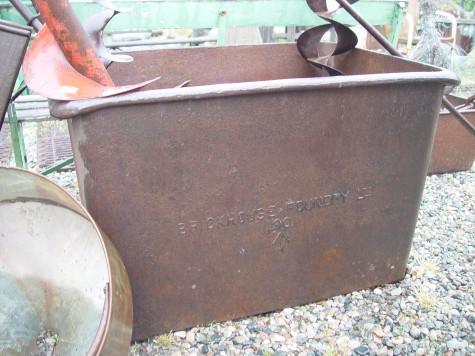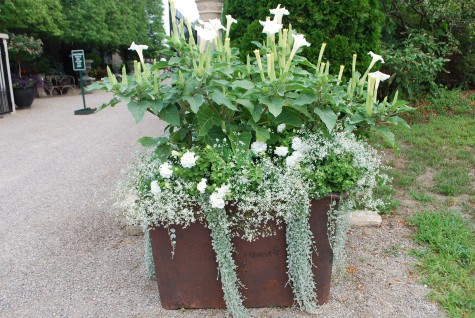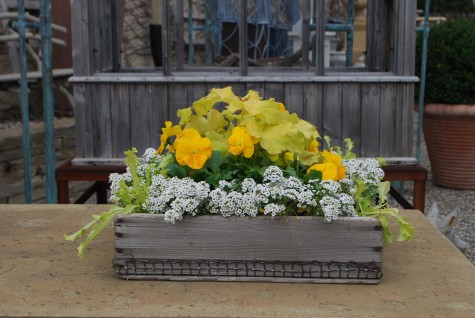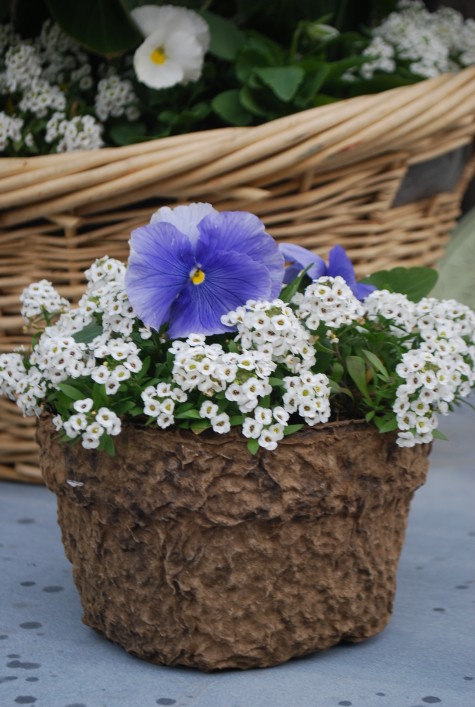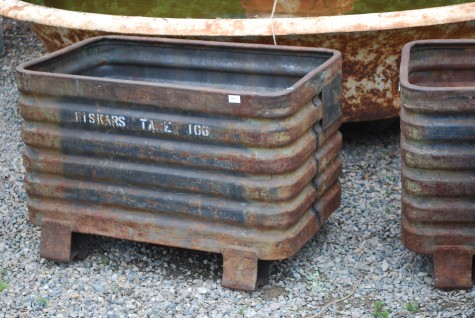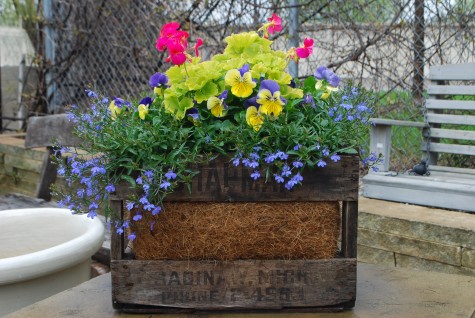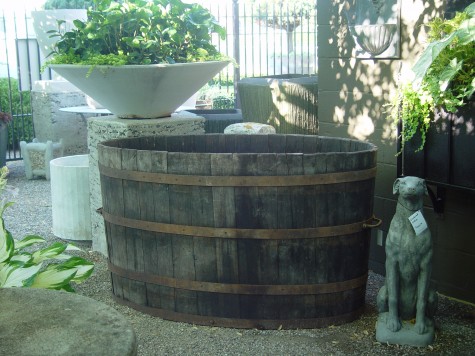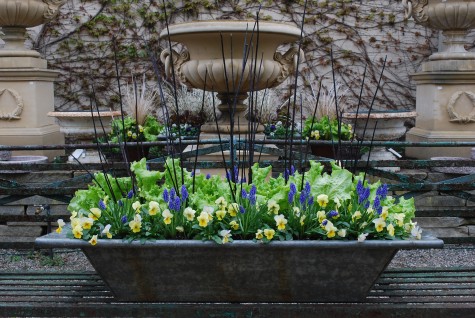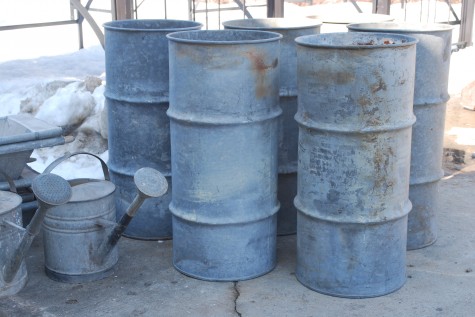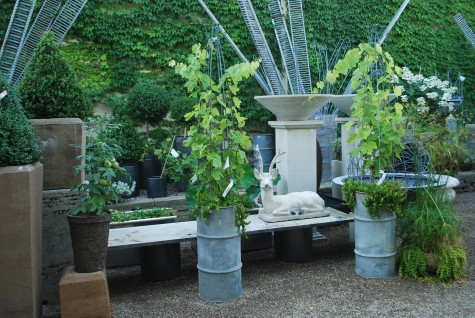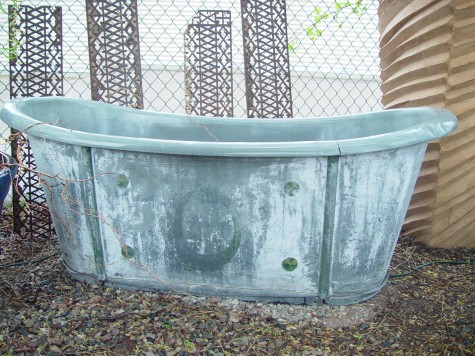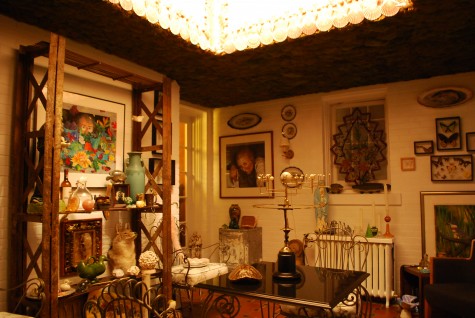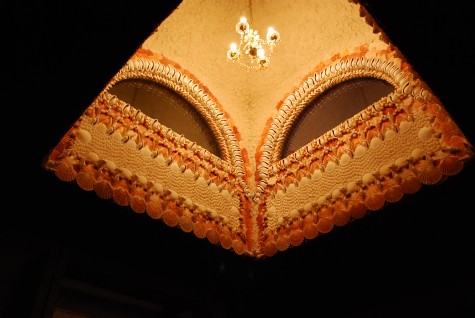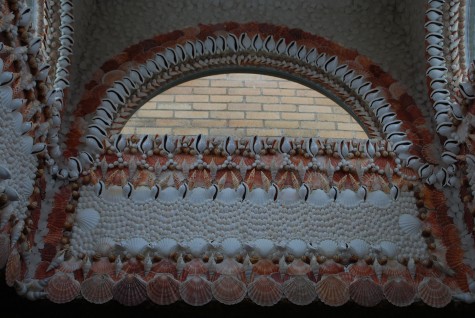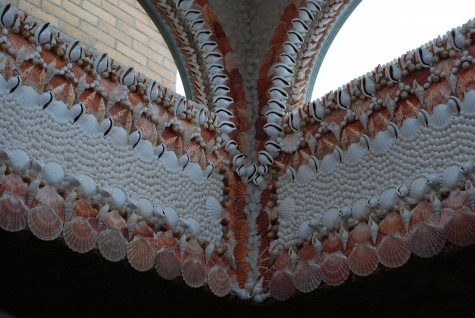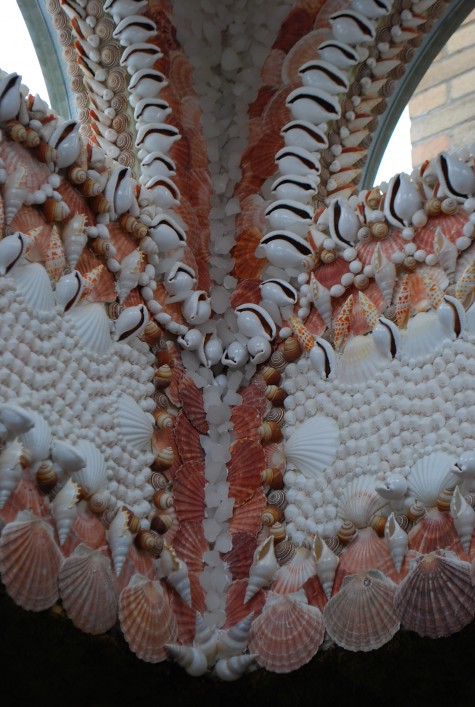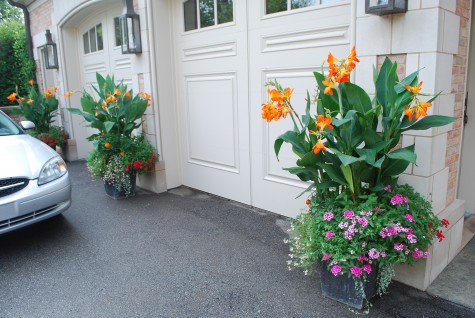 I will be meeting with my grower January 20 about what he will grow for our 2011 season. He grows lots of plants specifically for my work, but we carry them in the shop as well. Detroit Garden Works is by no means an full service independent garden center. We feature unusual and specimen plants. Plants to loose your head over. Plants with stature. Plants I fancy. As in a robust shrub of a 2 gallon size rosemary. Plants that I find are worth all the work it takes to grow them. Or plants that I cannot take my eyes off-as in this orange canna. I did not design and plant this container-I only furnished the pots. But this canna with a bloom that reminds me much of a clivia-I am so hoping we will have it available this coming season.
I will be meeting with my grower January 20 about what he will grow for our 2011 season. He grows lots of plants specifically for my work, but we carry them in the shop as well. Detroit Garden Works is by no means an full service independent garden center. We feature unusual and specimen plants. Plants to loose your head over. Plants with stature. Plants I fancy. As in a robust shrub of a 2 gallon size rosemary. Plants that I find are worth all the work it takes to grow them. Or plants that I cannot take my eyes off-as in this orange canna. I did not design and plant this container-I only furnished the pots. But this canna with a bloom that reminds me much of a clivia-I am so hoping we will have it available this coming season.
 I have a lot of opportunities to test plants, as I plant lots of them. I plant them for committed gardeners, and the not so committed. I am sure you could guess this collection of containers has a gardener at the helm. We have wintered her red spikes for years. She did not skip a beat when I planted a tibouchina, with the promise the leaves would be great until the flowers came late. Her fuchsia standards are always healthy. She can grow white begonias like a pro.
I have a lot of opportunities to test plants, as I plant lots of them. I plant them for committed gardeners, and the not so committed. I am sure you could guess this collection of containers has a gardener at the helm. We have wintered her red spikes for years. She did not skip a beat when I planted a tibouchina, with the promise the leaves would be great until the flowers came late. Her fuchsia standards are always healthy. She can grow white begonias like a pro.
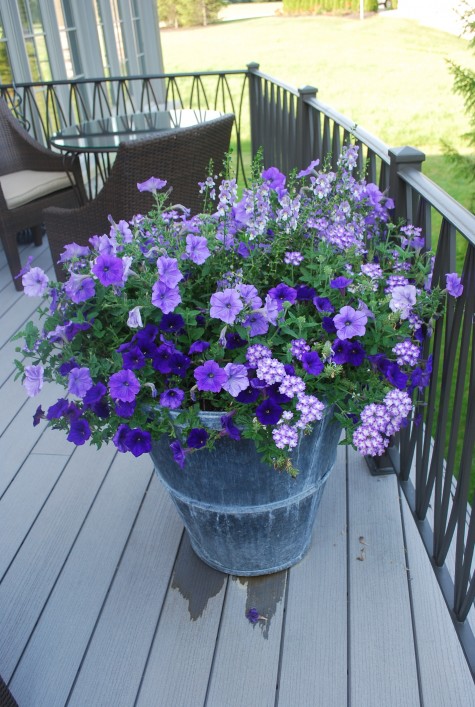 This pot I planted for a brand new gardener. I coached, she handled it all with aplomb. No tibouchina for her-not yet. Petunias, trailing verbena, and bicolor angelonia are pretty easy to grow. Providing you deadhead the verbena, and water when you need to, an annual container like this can provide lots of pleasure the summer long. I like for new gardeners to be successful. This means they will come back for more. They will be encouraged to try new things, expand. I do believe gardening is good for people. It is good for me to think that people I have coached will garden after me. This makes me willing to test and try new plants. A fabulous pot gets to be really fabulous when it is home to something beautifully grown.
This pot I planted for a brand new gardener. I coached, she handled it all with aplomb. No tibouchina for her-not yet. Petunias, trailing verbena, and bicolor angelonia are pretty easy to grow. Providing you deadhead the verbena, and water when you need to, an annual container like this can provide lots of pleasure the summer long. I like for new gardeners to be successful. This means they will come back for more. They will be encouraged to try new things, expand. I do believe gardening is good for people. It is good for me to think that people I have coached will garden after me. This makes me willing to test and try new plants. A fabulous pot gets to be really fabulous when it is home to something beautifully grown.
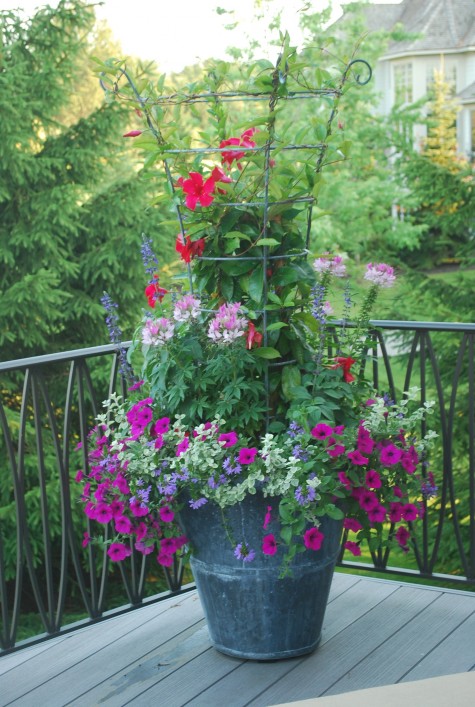 This tapered acid washed steel pot is of my design and manufacture. So much work came before the moment that I photographed this planting. I like that none of that shows. A great pot holds a generous volume of soil, and provides an elegant forum for a visual discussion.
This tapered acid washed steel pot is of my design and manufacture. So much work came before the moment that I photographed this planting. I like that none of that shows. A great pot holds a generous volume of soil, and provides an elegant forum for a visual discussion.
 This past season I bought 3 flats of double white petunias at market. That whim of a decision rewarded me all season long. Double white petunias are leggy and ungainly. Planted in concert with euphorbia Diamond Frost-as I have done here-a lucky move. This euphorbia is by no means the star of any show-I learned that. But it does a great job as best supporting annual plant. In this case, those petunia legs are covered in a frothy white petticoat. My advice-always plant it with a friend. It will soften, energize, and provide airy company for a friend.
This past season I bought 3 flats of double white petunias at market. That whim of a decision rewarded me all season long. Double white petunias are leggy and ungainly. Planted in concert with euphorbia Diamond Frost-as I have done here-a lucky move. This euphorbia is by no means the star of any show-I learned that. But it does a great job as best supporting annual plant. In this case, those petunia legs are covered in a frothy white petticoat. My advice-always plant it with a friend. It will soften, energize, and provide airy company for a friend.
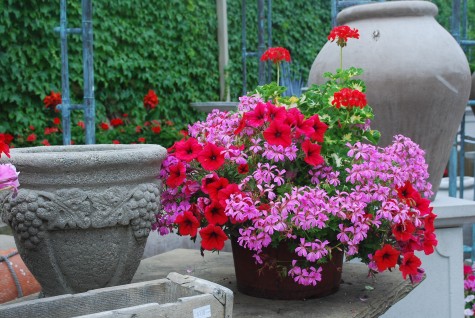 Potunias-have you heard of them? Petunias that thrive in pots-potunias. I tested lots of them this past season. I like what I see. They are vigorous, easy to grow, and delightful. Should you have small pots, consider potunias. Lots of plants simply grow too big for smaller pots. This plant was happy in a small container all season long. The trailing geranium-an old standby that blooms prolifically and reliably from start to finish.
Potunias-have you heard of them? Petunias that thrive in pots-potunias. I tested lots of them this past season. I like what I see. They are vigorous, easy to grow, and delightful. Should you have small pots, consider potunias. Lots of plants simply grow too big for smaller pots. This plant was happy in a small container all season long. The trailing geranium-an old standby that blooms prolifically and reliably from start to finish.
 This client has no land, but does have a second story terrace. This giant steel box was home to a mix of flowers, including a morning glory, as well as a pair of cherry tomatoes, and some basil. A steel trellis on the wall supported all of the vining plants. The box is 4 feet long, and 18 inches deep-big enough to grow lots of plants.
This client has no land, but does have a second story terrace. This giant steel box was home to a mix of flowers, including a morning glory, as well as a pair of cherry tomatoes, and some basil. A steel trellis on the wall supported all of the vining plants. The box is 4 feet long, and 18 inches deep-big enough to grow lots of plants.
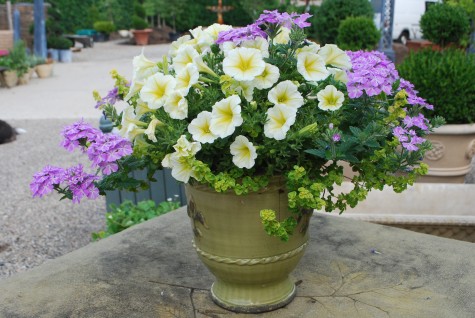 The Lanai trailing verbena series is a favorite of mine. This Lavender Star is a healthy grower and great performer. This is another small container that did well all season. The chartreuse marjoram is one of my favorite green plants. It is a compact grower, the color of which enlivens almost any other color combination.
The Lanai trailing verbena series is a favorite of mine. This Lavender Star is a healthy grower and great performer. This is another small container that did well all season. The chartreuse marjoram is one of my favorite green plants. It is a compact grower, the color of which enlivens almost any other color combination.
 The first plants I ever grew from seeds were zinnias and beans. The seeds are big enough to handle easily, and they germinate so fast in warm soil. My Mom’s scheme to turn me into a successful gardener-big seeds. As the mature zinnias can easily fall prey to mildew, I plant them in large pots so they can spread out. And I keep the pots as dry as possible. When watering, I put the hose on top of the soil-I never get water on the plants themselves. When the summer is relatively rain-free, good culture can help stave off mildew until late in the season.
The first plants I ever grew from seeds were zinnias and beans. The seeds are big enough to handle easily, and they germinate so fast in warm soil. My Mom’s scheme to turn me into a successful gardener-big seeds. As the mature zinnias can easily fall prey to mildew, I plant them in large pots so they can spread out. And I keep the pots as dry as possible. When watering, I put the hose on top of the soil-I never get water on the plants themselves. When the summer is relatively rain-free, good culture can help stave off mildew until late in the season.
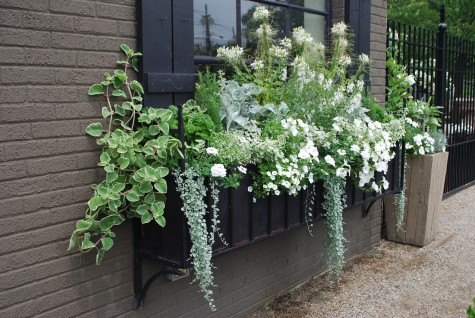
Yes indeed I miss my flowers. My grow meeting on the 20th, the first step towards spring.
